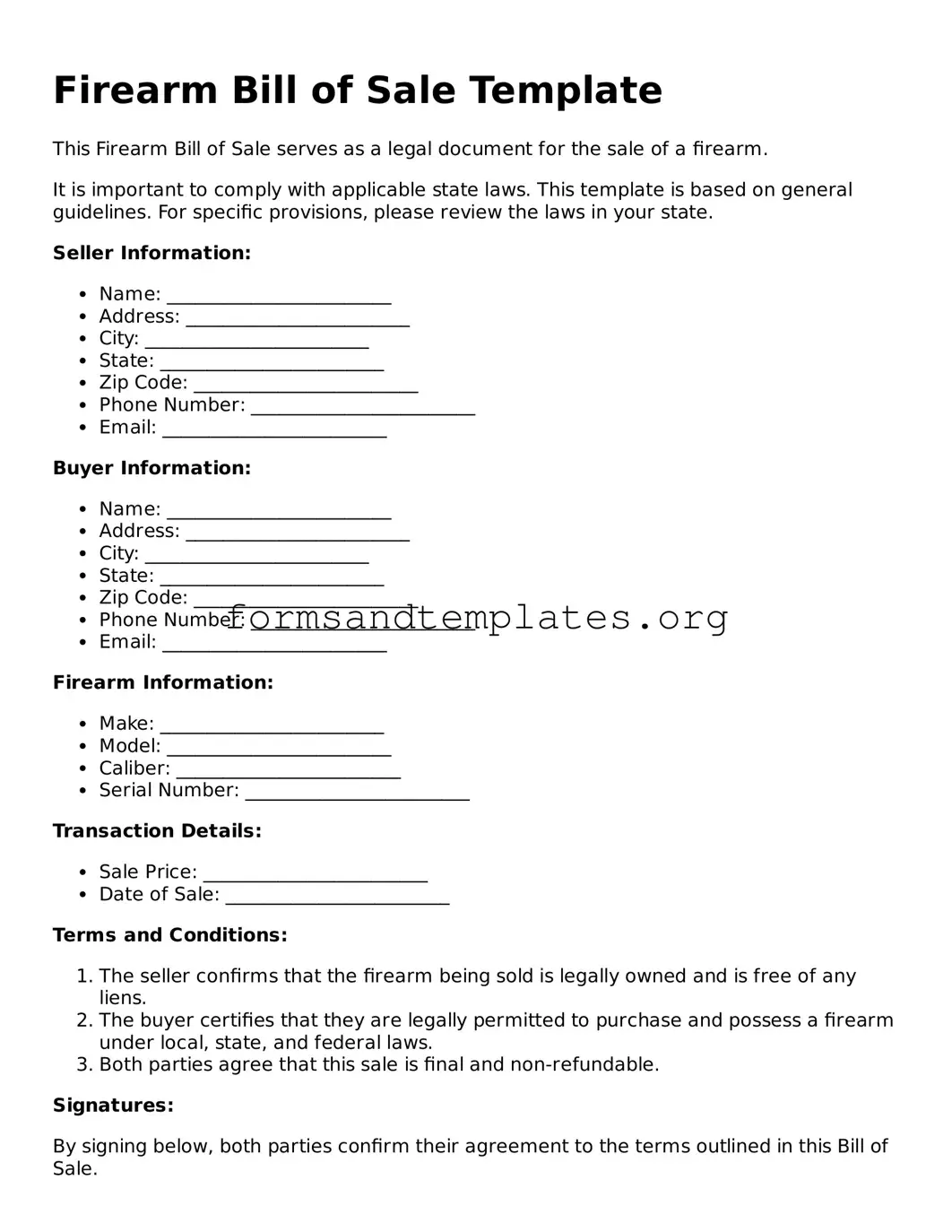Firearm Bill of Sale Template
This Firearm Bill of Sale serves as a legal document for the sale of a firearm.
It is important to comply with applicable state laws. This template is based on general guidelines. For specific provisions, please review the laws in your state.
Seller Information:
- Name: ________________________
- Address: ________________________
- City: ________________________
- State: ________________________
- Zip Code: ________________________
- Phone Number: ________________________
- Email: ________________________
Buyer Information:
- Name: ________________________
- Address: ________________________
- City: ________________________
- State: ________________________
- Zip Code: ________________________
- Phone Number: ________________________
- Email: ________________________
Firearm Information:
- Make: ________________________
- Model: ________________________
- Caliber: ________________________
- Serial Number: ________________________
Transaction Details:
- Sale Price: ________________________
- Date of Sale: ________________________
Terms and Conditions:
- The seller confirms that the firearm being sold is legally owned and is free of any liens.
- The buyer certifies that they are legally permitted to purchase and possess a firearm under local, state, and federal laws.
- Both parties agree that this sale is final and non-refundable.
Signatures:
By signing below, both parties confirm their agreement to the terms outlined in this Bill of Sale.
Seller's Signature: ________________________ Date: ____________
Buyer's Signature: ________________________ Date: ____________
This Bill of Sale may be retained by both parties for their records.
